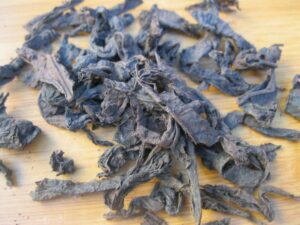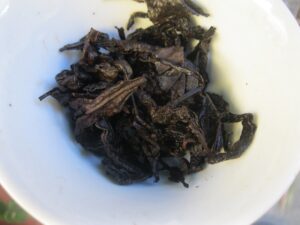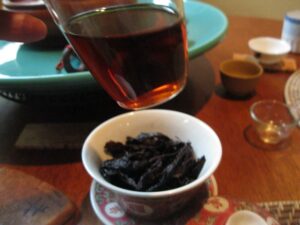Big Leaf Sancha Puerh
A few years back I picked up some big leaf sancha advertised as wet stored. Sancha is also maocha, i.e., loose leaf. Although there was some wet-stored quality to it, the overriding sense was that it was too vegetal and just not very tasty. Sunday 7 Feb 2021, I thought I would give it a try. What a difference.
This ripe sancha is no longer vegetal. Sancha (散茶)shouldn’t be confused with the Japanese sencha (煎茶); the former references how the production looks at market, whereas the former references a processing method particular to green tea.
This particular Wild Big Leaf sancha purported to be from ’03. Maybe. Items of this sort, however hard to find, I can’t imagine being the ages they purport. It’s often hard to tell given storage conditions but even so, I’d say that many are as off as many as seven years but usually 3-5. This “offness” in years makes it difficult to determine how good the production actually is either at the time of tasting or in the future.
The blackness of the leaves here are indicative of a shou. The taste and colour are more deceptive. Furthermore, there is zero humidity or old taste, a la newspaper, to tip the hand one way or another. This is a faint cinnamon, however, suggesting aged raw and a superior ripe accomplishment.
The overriding expression of berry, reminiscent of some raw and ripe productions in the ’99 to ’07 range is exhilarating. At the same time, the light cinnamon note makes it extraordinary.
It brews crystal clear. There is nothing murky or dank or “ripe” about it. This is mandarin ripe, not a coffee substitute. It doesn’t angle toward coffee but toward old raws, the way real ripes should.



